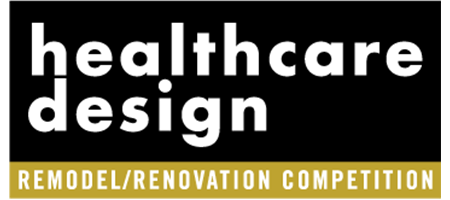The Day Two Keynote at the 2024 Healthcare Design Conference + Expo, Oct. 5-8 in Indianapolis, kicked off with the presentation of the Nightingale Product Awards, followed by the introduction of the Walter B. Jones, Jr., FAIA Excellence Award for Aspiring Healthcare Architects.
Honoring Walter B. Jones
Jones, a highly respected architect, mentor, and trailblazer in the healthcare design industry, died in December 2023.
Throughout his career, which included transformative projects for Parkland Hospital and The MetroHealth System, Jones was a champion for diversity in healthcare design and health equity in the communities he served.
To continue his legacy of mentorship, the award, sponsored by Healthcare Design, seeks to identify students and aspiring architects from underrepresented populations to nurture their talent and interest in healthcare design.
Each year, the winner of the award will receive passes to attend the Healthcare Design Conference + Expo.
Panel discussion on mentoring healthcare design talent
Building on the topic of mentorship to drive diversity in the healthcare design workforce, a panel of industry leaders then joined Brand Director Jennifer Kovacs on stage for a discussion on “Nurturing the Next Generation of Talent to Innovate Health Equity.”
The speakers included Tammy Thompson, director of experience engagement, education, and design at East Carolina University Health (Greenville, N.C.), Roderick Walton, principal at architecture firm Moody Nolan (Atlanta), and David Allison, alumni distinguished professor and director of graduate studies in architecture and health at Clemson’s School of Architecture (Clemson, S.C.)
“I am here today as a licensed architect who enjoys a successful career in healthcare design because I had a mentor named Walter Jones, and he invested time with me,” Thompson said.
She added that “anyone can be a mentor.”
“Mentors don’t have to be the same race or gender as their mentees; they only need the willingness to help. Even those new or early in their career have had the privilege of being trained by healthcare design experts at programs specializing in healthcare design,” she said.
Programs for aspiring healthcare design professionals
Thompson also cited the need for more programs like a scholarship program at Clemson University (Clemson, S.C.) in honor of Harvey Gantt, the first Black student to attend Clemson and earn a degree in architecture. The Harvey B. Gantt Scholarship Endowment established in 1988 helps to offset the cost of an architecture education for Black students.
“We need more programs like that all over the country, not only to bridge a financial gap, but also to provide mentorship opportunities for students and young professionals,” she said.
A lot of architecture and design firms are beginning to offer scholarships and fellowships to help students, particularly in underrepresented populations, to afford an education in architecture, Allison noted.
“But we, as an industry, really need to expand on that,” he said. “The lead barriers are financial and awareness of what opportunities there are in healthcare architecture.”
Building diversity in healthcare architecture
Architect Walton said that “positioning architects as trusted advisors at a very early age is important” and can be achieved through summer programs such as one offered at Clemson’s School of Architecture that introduces students to architecture as a potential career.
“Our responsibility as practitioners is to make the industry’s intentions and motivations more transparent for a new generation,” he said. “Having more diverse voices in the room as we position the future of healthcare design is incredibly important.”
Greater diversity in healthcare architecture and design can also help to address disparities in healthcare access and outcomes, according to the speakers.
For example, more diverse project teams can foster design of healthcare spaces that are more welcoming and accessible to people of color, many of whom can harbor some mistrust of healthcare institutions.
Proven benefits of diverse project teams
In the conclusion of the panel discussion, Thompson challenged attendees to pay attention to the data that prove the effectiveness of a diverse workforce.
“No one has all the solutions,” she said. “When we look at lived experiences from a variety of individuals and we diversify our teams to include representation from multiple backgrounds, it makes us stronger as designers and design teams and more prepared to address the issues our clients are facing in the healthcare industry.”
More coverage of the 2024 HCD Conference + Expo will be featured in Healthcare Design’s November/December issue. For more conference new and updates, go here.












